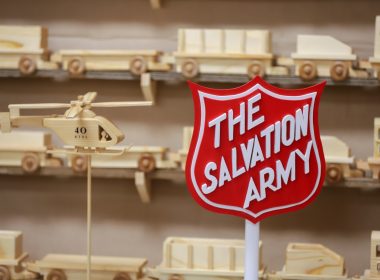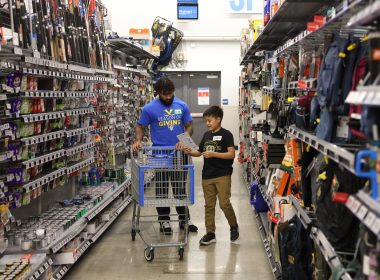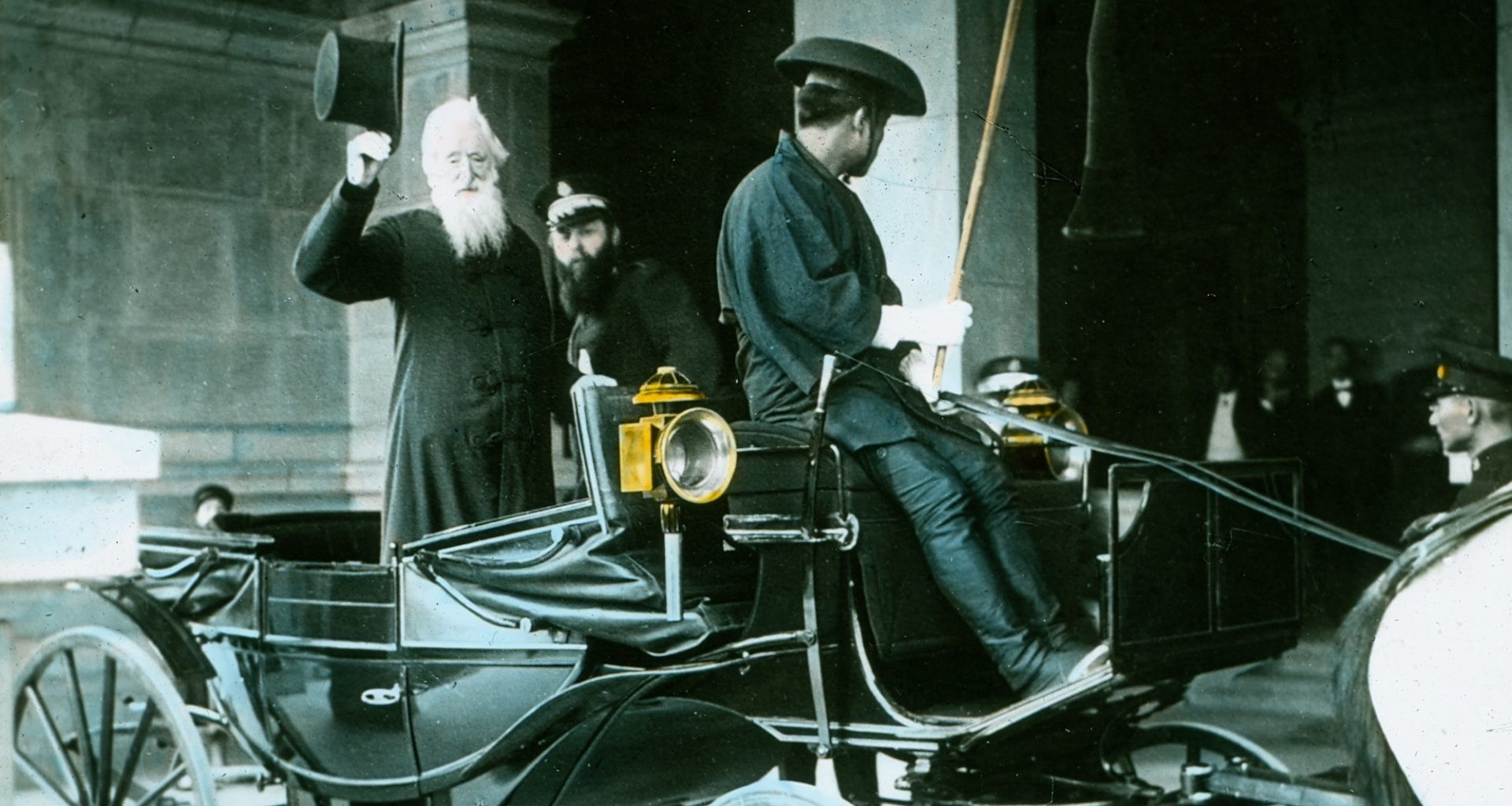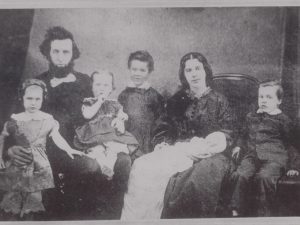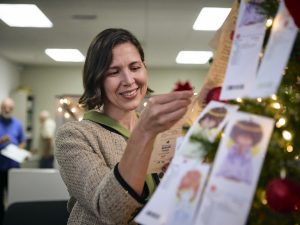“Darling, I’ve found my destiny!” William Booth is said to have told his wife, Catherine, when he returned home from visiting the slums of London’s East End in 1865.
Booth, at that time a Methodist minister, had experienced a vision in those slums, one he believed revealed the true nature of human suffering—a hell on earth—and the need for salvation.
Later he described this revelation in his book, “Visions,”—essentially, a stormy sea filled with drowning people, a mighty rock rising above the depths into the sky and a surrounding platform where some rescued souls helped others to safety.
His vision would become the foundation for The Salvation Army—his call for Christians to rescue the lost and bring them to the safety of heaven’s shore.
While Booth’s ultimate goal was to lead people to salvation through a relationship with Christ, he realized a critical truth.
“You cannot warm the hearts of people with God’s love if they have an empty stomach and cold feet,” Booth said, as he established mission stations to feed and house the poor in 1865.
By the time Booth published “In Darkest England and the Way Out” (1890), he had expanded his understanding of what God was looking for from the church, according to Bakersfield (California) Corps Officer Captain Clint Trimmer.
“It was the philosophical—if not directly the programmatic—blueprint of everything the Army still does today,” he said. “It is the idea that people, through either their own fault or no fault of their own, find themselves in desperate situations. And that The Salvation Army can step into that situation and provide practical assistance, but also do it in such a way that reflects the love, the care and the character of God.”
Today, The Salvation Army has grown—perhaps even beyond what Booth imagined—to a presence in 134 countries, each with its own expression but united in mission.
“We still carry out that two-sided mission,” Trimmer said. “Every day we see people being drawn to the Army, not just because we provide services, but because we also recognize that they are made in the image of God, and we treat them with dignity, care and compassion…I think that’s what really sets the Army apart. And I think that is in no small measure because of that vision that Booth had originally that we are still carrying out.”
Here are five areas in which The Salvation Army has implemented its “two-sided mission,” in both Booth’s time and in the USA Western Territory today.
1. Meeting practical needs
Then: Inspired by his vision to reach the marginalized and overlooked, Booth, with his wife and ministry partner, Catherine, began preaching in the London slums, where they also helped meet people’s practical needs like food, shelter and clothing. Initially, they called their ministry “The Christian Mission,” renaming it The Salvation Army in 1878.
Now: The Salvation Army’s Ray and Joan Kroc Corps Community Centers—a network of 26 centers nationwide in the U.S.—aim to reach underserved communities with programs, services and facilities designed to facilitate life transformation. The centers offer training in sports, education and the arts, and meet practical needs with counseling services, food distribution and emergency assistance, along with church services to meet spiritual needs. Joan Kroc, who funded the centers with a bequest of $1.8 billion, wanted her gift to enrich the lives of those who might otherwise be overlooked.
2. Helping people find work
Then: Booth created training centers to prepare people for specific jobs, especially in agriculture, to support those emigrating to overseas colonies. Hadleigh Farm Colony, which opened in 1891, still operates today as an employment training center. Booth also set up an employment agency to help people find work.
After seeing the dangerous conditions in match factories, he opened one that used safe methods and paid fair wages. He also founded a bank for the poor, a soup kitchen and a missing persons bureau.
Now: Throughout the Western Territory today, The Salvation Army offers a variety of no-cost job training programs to give individuals the skills they need to support themselves. From culinary training to HVAC training, these programs offer an opportunity to accept a hand-up instead of just a hand-out.
Some Salvation Army locations offer job development workshops that explore career options, resume building, interview techniques, dressing for success, using LinkedIn and applying for jobs online.
3. Sheltering people experiencing homelessness
Then: In 1888, The Salvation Army opened what was likely the organization’s first men’s shelter in Limehouse in London’s East End. Others soon followed, including one at the previous site of the Whitechapel Corps, with space for 100 men. This stands as an early example of Booth’s and The Salvation Army’s practical approach to homelessness—offering individuals food and a safe place to sleep.
Now: Across the U.S., the Pathway of Hope initiative—an individualized case management program to help struggling families—reflects The Salvation Army’s evolution from emergency aid to addressing systemic poverty through empowerment and hope. Throughout the West, The Salvation Army provides shelter for the unhoused—men, women and families—in addition to wraparound supportive services in many instances.
In San Jose, California, Emmanuel House, for 65 years a men’s shelter, is expanding to include a women’s wing to help address the area’s growing number of unhoused single women. In Los Angeles, the Westwood Transitional Village provides transitional housing for about 150 individuals, including single mothers and veteran families. And in Beaverton, Oregon, the Veterans and Family Center houses veterans and family members and offers various classes along with alternative methods of addressing PTSD.
4. Bringing justice for those often overlooked
Then: In 1885, W.T. Stead’s investigative journalism series, “The Maiden Tribute of Modern Babylon,” exposed the widespread child prostitution and sex trafficking in Victorian England. It aimed to raise the age of consent, then 13, and to combat sexual exploitation of minors. William Booth’s son, Bramwell, collaborated with Stead. After the series was published, William and Catherine Booth mobilized Salvationists to collect nearly 400,000 signatures, successfully petitioning Parliament to raise the age of consent to 16.
Now: The Western Territory’s Social Justice Department supports survivors of human trafficking and raises public awareness through advocacy and education. In Las Vegas, The Salvation Army’s SEEDS of Hope program helps trafficking survivors rebuild their lives. Echoing “The Maiden Tribute of Modern Babylon,” The Salvation Army in the Federated States of Micronesia helped raise Pohnpei’s age of consent from 16 to 18 in 2018.
5. Supporting young, unwed mothers
Then: Florence Booth, William Booth’s daughter-in-law, founded Ivy House—The Salvation Army’s first dedicated maternity home—in 1891. It offered prenatal care, midwifery training and post-birth support, including job placements for women and foster care for infants. The home aimed to address the stigma and lack of support unwed mothers faced.
Now: In Boise, Idaho, The Salvation Army Booth Program for Young Parents partners with Cardinal Academy, a charter high school for pregnant and parenting youth located on The Salvation Army’s Boise campus. The Booth Program provides wrap-around services for the students, ensuring they have what they need to succeed as they become parents.
Do Good:
- Imagine we had a good-living modern village with real talk, real stories and real support for being human and hopeful. Join the Hopefuls Collective and find a place of low-pressure, high-encouragement love anytime you need it, whether you know it or not. Get in the group today.


